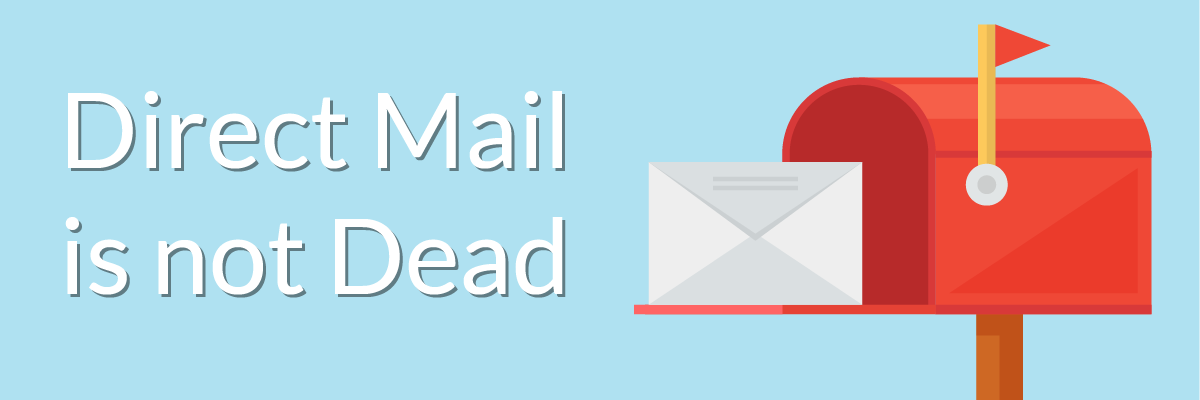Putting Your Message in the Hands of Your Audience: A Case for Direct Mail
by Ben Quinn
The goal of a marketing campaign is to sell your products or services. But is also should convey that your company shares the same core values as your customer. The most impactful companies gain customer trust by providing real value to a persons life. So when considering your communication tools, don’t forget he benefits that traditional mail brings to the table.
Nearly two-thirds of consumers told the United States Postal Service they “value the mail” they receive in their mailbox.* Even millennials site paper as more trustworthy than digital documents.** There are real benefits to the tried and true vehicle of a well-executed direct mail campaign, even in this digital age. When a consumer gets something tangible in the mail, you send a message that transcends an email viewed via smartphone or desktop.
First, before the the piece is even opened, the consumer assumes they likely agreed to receive it. Second, using direct mail also reflects the company has gone the extra mile to print, package, and send the message through the employees of the mail service, as opposed to hitting “send.” And last, the consumer can’t simply hit delete. They need physically dispose of the piece themselves. And oftentimes the piece lingers on the kitchen counter – allowing more time for consideration.
The 40/40/20 Rule.
The benefits of using direct mail are all real advantages. The execution, however, is what makes or breaks how effective your direct mail piece is at affecting your bottom line. There are many components to a good direct mail campaign. Ed Mayer, a marketing expert from the sixties, developed a rule called the “40/40/20 rule.” It states that the first forty percent of your efforts should determine your audience. The next forty percent should focus on your offer that incentivizes a consumer to action. The last twenty percent should focus on the creative details of your piece, such as format, design, copy and structural delivery.
This tried and true formula for using direct mail worked in the sixties. Like a good pair of blue jeans, it still injects value and style to your overall brand even today. In an era where mail is declining, there is real opportunity to tell your audience that you want their business enough to make the effort that a direct mail piece represents. Using direct mail goes beyond “hitting send.” It conveys that what you have to say is important enough to put it in ink and paper. So when considering your overall marketing campaign, consider using direct mail and show your audience that you value their business to send them something tangible.
*Carrier, Joyce. The Power of Direct Mail. USPS Deliver Magazine, vol. 7 issue 6. Dec. 2011
**Millennial Paper Usage and Attitudes, TRU presented at Paper2011 sponsored by the American Forest & Paper Assn. and the National Paper Trade Alliance, March 2011
Other credits to Sappi Fine Paper North America’s “Act Now” 2013
Continue ReadingCreating an Effective B2B Direct Mail Campaign
by MGB2B

It just needs to work a lot harder. For B2B companies, the advent of email marketing has implied the decline, if not the impending doom of printed direct mail as a part of their marketing mixes. Yet, while we all realize that email is great, it can be just as easily ignored as any other advertising medium. In a survey of nearly 500 marketing and business professionals, 57% of whom operate in the B2B sector, participants reported that direct mail marketing generated a response rate 37 times higher than email marketing when sent to curated lists, and 10 times higher when sent to purchased lists. As you begin to develop your B2B direct mail campaign, follow these 3 proven steps for a strong impact:
Continue ReadingContent Marketing is Not Enough, Especially for B2B
by MGB2B
 Ask yourself this question: Can your brand exist solely from sales to the people on your current content marketing list?
Ask yourself this question: Can your brand exist solely from sales to the people on your current content marketing list?
If you answered yes, consider that the majority of people on your list are not going to lead to a sale. And there’s nothing wrong with that. Content marketing works, and today, it’s an essential part of marketing that all brands should have in their mix. I’m not saying you should abandon it.
But a recent study showed that while most B2B brands devote about 20% of their marketing budgets to content marketing (a pretty smart allocation, especially if your brand is not well known), there are a significant amount who have upped that amount to 40% or more.
Continue Reading